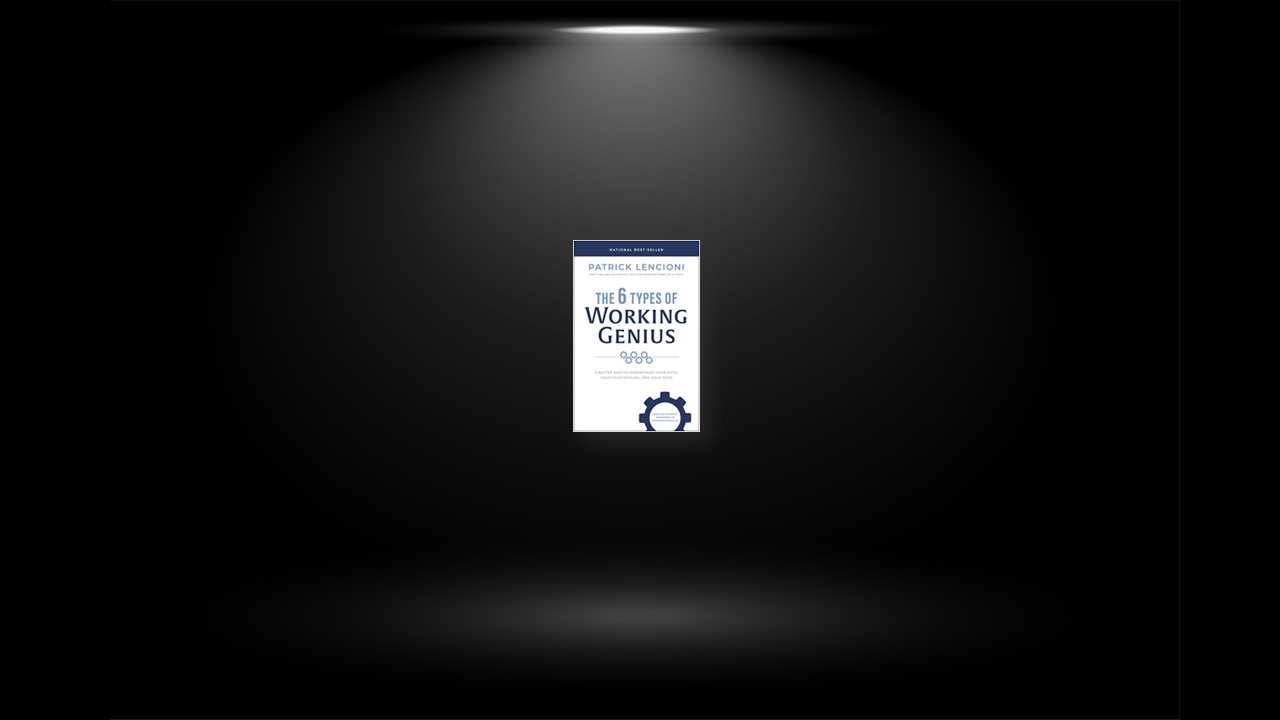The 6 Types of Genius
#1 The Genius of Wonder involves the ability to ponder and speculate and question the state of things, asking the questions that provoke answers and action. People with this genius are naturally inclined to do these things. They find it easy to lose themselves in observing the world around them and wondering whether things shouldn’t be different or whether there is untapped potential that should be tapped.
#2 The Genius of Invention is all about coming up with new ideas and solutions. People with this genius are drawn toward origination, creativity, and ingenuity in the truest sense of those words, even with little direction and context. Though every type is a genius, these are the people who are most often referred to as “geniuses” because many of their ideas seem to come out of thin air.
#3 The Genius of Discernment is related to instinct, intuition, and uncanny judgment. People with this genius have a natural ability to assess an idea or situation, even without a lot of data or expertise. Using pattern recognition and gut feel, they are able to provide valuable advice and feedback around most subjects in a way that transcends their levels of specific knowledge or information.
#4 The Genius of Galvanizing is about rallying, motivating, and provoking people to take action around an idea or an initiative. People with this genius are naturally inclined to inspire and enlist others to get involved in an endeavor. They don’t mind persuading people to rethink or change their plans in order to embark on something worthwhile.
#5 The Genius of Enablement involves providing people with support and assistance in the way that it is needed. People with this genius are adept at responding to the needs of others without conditions or restrictions. They are naturally inclined to help others accomplish their goals and often can anticipate what people might need before they even ask. Individuals with the Genius of Enablement are frequently unaware that this is a genius at all.
#6 Genius of Tenacity is about the satisfaction of pushing things across the finish line to completion. People with this genius are not only capable of, but naturally inclined to, finish projects and ensure that they are completed according to specification. They gain energy by pushing through obstacles and seeing the impact of their work, and they find joy in crossing tasks off their list and getting closure.

Responsive Vs. Disruptive Geniuses
The three responsive geniuses include Wonder, Discernment, and Enablement.
People with the Wonder genius respond to their environment, observing the organization, industry, or world around them in order to generate questions. They don’t necessarily set out to change the world around them. They simply behold it, take it in, and let their observations unfold.
Those with Discernment respond to the ideas or proposals of inventors, providing feedback, advice, or counsel. They are a big part of the innovation process but aren’t necessarily the ones to provoke it. Beyond innovation, they often respond to, and even curate, whatever the world puts in front of them.
Those with Enablement respond to the stated requests of others, most often someone Galvanizing for support. They are ready to provide what is needed, and are even so good at surmising what is desired that they begin to provide it before it has been completely specified or requested. But they don’t generally initiate support until it is needed.
The three disruptive geniuses include Invention, Galvanizing, and Tenacity.
People with Invention see a problem and come up with a novel solution that will defy the status quo. They relish the opportunity to create useful havoc, and thereby add value to a situation.
Those with Galvanizing as a Working Genius are most clearly disruptive. They initiate change by rallying people, calling for others to enlist in a project or program. They recruit and organize and inspire others, which, by definition, disrupts people to shift their priorities around what needs to be done.
Those with Tenacity disrupt by identifying obstacles or roadblocks and pushing through them. They are determined to complete a project regardless of what stands in the way. They bring about whatever change is necessary to achieve success, regardless of what needs to be disrupted in the process.
The Six Required Activities For Any Team-Based Work
Ultimately, every collective endeavor involves—and requires—each of the six geniuses. If even one of them is lacking, failure and frustration become much more likely. As such, each type of genius gives something one of the other geniuses needs. In turn, it receives something from another genius. Let’s take a look at how each of the geniuses fits within the general flow of any type of work endeavor.
Wonder: The first stage of work calls for someone to ask a big question, ponder the possibility of greater potential, raise a red flag, or simply speculate about the state of things. “Is there a better way?” “Is this the best company we can be?” “Does anyone else feel like something is wrong with the way we deal with customers?” “Do we need a vacation?”
Invention: The next stage involves answering that question by creating a solution, coming up with a plan, proposing a new idea, or devising a novel approach. “I have an idea!” “How does this plan sound?” “What if we helped customers like this?” “Let’s go somewhere within driving distance, like the Napa Valley!”
Discernment: The third stage is all about responding to and evaluating the idea that comes from Invention. It involves assessing the proposal, providing feedback about the solution, or tweaking the approach. “My gut tells me that would be a great idea.” “I have a strong feeling that something’s not quite right about those values.” “I think we need to tweak your product idea a little more before it’s ready.” “Monterey Bay has better weather this time of year if we want to spend time outside.”
Galvanizing: Once that plan or solution has been vetted and is judged to be worthwhile, the next step calls for someone to rally people around it, enlist them to help implement it, or inspire them to embrace it. “Hey, everyone, listen to her idea!” “Let’s all rally around these values.” “Who’s ready to help us make the customer service program work?” “Okay, everyone, clear your schedules because we’re going to Monterey.”
Enablement: Next, someone has to answer that call to action, to make themselves available, to agree to do what is needed to get the solution off the ground and moving forward. “I’m on board to help with that idea.” “Count me in with those values.” “I’d love to help with customers; let me know when you need me.” “I’ll drive to Monterey, and I can take six people in my car.”
Tenacity: Finally, someone has to complete the project, finish the program, push through obstacles to ensure that the work is done to specification. “Let’s keep pushing because this new idea isn’t a reality yet.” “Okay, let’s wrap this up and lock in on the values so we can send them to the board for approval by tonight’s deadline.” “Move over, I’ll finish the customer database for you.” “I know a guy who works at that hotel. I’ll call him right now about booking a block of rooms and securing a discount.”
Here is an oversimplified review of how all this works: the W identifies the need for change, the I creates the solution, the D evaluates and refines the solution and recommends it for action, the G rallies people for action, the E provides support and human capital, and the T makes sure the work gets accomplished and achieves the desired results.
Of course, work never fits neatly into a completely logical, linear, and orderly process. It’s much messier than that. What’s most important to remember is that, in one way or another, every team project, every group program, every collective endeavor involves these six activities, and that they generally come about in this order.
Filling the Gaps
There are a few ways a team can go about filling any gaps it may have relative to the six types. First, it can hire people who possess the genius that is missing. Of course, that is not always possible or immediately practical. Second, a team can borrow someone from within the organization. For instance, it can invite an outsider who has the missing genius to attend important meetings and contribute when necessary. Third, the team can find people within the team who have the missing genius in their areas of competency, and rely on them to fill the gap. But this should be a temporary solution as it can eventually result in burnout and resentment.


